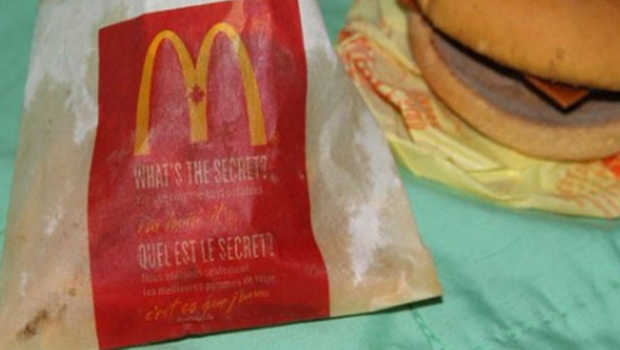The Price the Planet Pays for Our Takeaways
By Isabelle Lloydd
It’s a Friday night and everyone’s exhausted – cooking isn’t on the cards. Takeaways it is. We order, pay online, and the Uber delivers it to our door. It’s fast, simple, and we’re all too ready to fill our plates. With this mindset, it’s preferable to dismiss the environmentally dubious packaging our dinner arrives in. We’ll try to recycle what we can, yet much of our meal’s packaging and service ware will fall into the waste, and thus the problem, and our guilt, grows.
How did we reach this environmental crisis, wherein plastic forms the common go-to for transporting food and facilitating eating in the takeaway industry? Packaging ensures food quality is retained throughout storage and transport, thus reducing food waste. Food packaging reduces bacterial growth, ensuring food’s safety and freshness for consumers, whilst disposable cutlery is useful for buyers without access to reusable cutlery at that time and place. Plastic packaging is utilised because it’s sturdy yet light-weight and flexible, optimising food transport.
Globally the takeaway food market has exploded, reaching a projected value of greater than eighty billion pounds in 2020. Explaining the risk of this development, Science Daily referenced a 2018 University of Manchester study indicating the takeaway trend’s consequences: In the European Union, an estimated 2025 million takeaway containers, substantially disposable, are used annually. [1]Considering the shift to takeaways versus dining out caused by the pandemic, this market has only grown since. However, this study also suggested that by seeking recycling methods for disposable takeaway containers, we could significantly reduce the environmental threat.
A system where we consume, use, and dispose at a rate which is wasteful and unsustainable for our planet is referred to as a linear economy. This economy model increases carbon emissions and exhausts natural resources, propelling constant production rather than conservation and reuse. For example, to facilitate production and transport of disposable and single-use service ware and packaging, resources such as corn, water, trees, bamboo, and fossil fuels are expended, thus enabling the dish-washing free, low-energy-expenditure takeaways model. Due to its sheer volume, pollution cannot be effectively retained within our waste management infrastructure, implicating waterways, marine environments, soil, and beaches. Takeaway packaging also concludes in landfill en masse, whereby the anaerobic decomposition of paper, cardboard, and compostable materials play a part in methane production, whilst additives in plastic cause toxic leachate, liquid pollution involving many harmful chemicals. [2]
The journal Nature Sustainability published an article in 2021 stating that, of the human-produced waste present in the sea, plastic takeaway rubbish comprised almost half, primarily plastic containers, wrappers, bags, utensils, and cans. [3]Approximately eight to ten million metric tons of plastic lands annually in our seas, plastic comprising eighty percent of total ocean pollution. Plastics then form marine pollution gatherings called “garbage patches” or break down over five hundred to one thousand years into microplastics toxic to marine life. [4]
Only roughly ten percent of plastic produced in the world currently undergoes recycling, whilst the remainder pollutes the natural environment or is incinerated, causing air pollution. Sealife suffers severely, as via contact or ingestion the ocean’s animals can become critically entangled in plastic materials, experiencing suffocation, laceration, internal injuries, or infection. Aggressive species also move through the ocean via floating plastics, another way in which plastic undermines biodiversity, the food web, and marine ecosystems. [5]
According to the Ministry for the Environment in 2019, landfill waste in New Zealand rose by forty-five percent in that last decade, whilst the World Bank 2018 and OECD 2018 state we are one of the world’s most prodigal countries per head. [6]The majority of plastic produced today remains reliant on natural gas and petroleum to be formed, despite the presence of moderner plastic types derived from plant materials such as corn. Polymer plastics, which can be formed organically or synthetically, are often present in takeaway packaging. [7]
Within my school community, the environmental effect of single-use service ware and packaging is exemplified through the to-go food and beverages brought to school or purchased from the school tuck shop, culminating in an on-campus litter presence. The infrastructure in schools and public spaces to foster responsible disposal and recycling habits is distinctly lacking. Bins can be scarce and restricted solely to waste, not recycling, and designed so that upon full capacity their contents overflows into the environment.
Positively, Takeaway Throwaways, an anti-waste organisation, presented a petition of greater than 10,000 signatures to Aotearoa’s government in May 2022 demanding investment into reuse systems. Their spokesperson Hannah Blumhardt urged the need to develop reusable products’ accessibility to avoid people turning to alternate environmentally harmful materials instead. [8]The NZ Ministry for the Environment is working to phase out single use and difficult to recycle plastics, prohibiting various single-use plastics by 2025. To individuals and businesses, they suggest the shift to reusable or non-plastic alternatives, or at least easier to recycle plastics. [9]
Worldwide, methods of action exhibited by climate organisations include public clean-up projects for beaches and waterways, petitioning governments for better waste legislation and infrastructure, and cooperation with businesses to shift to more eco-friendly outlooks, such as reusable or “bring your own meal-ware” models within food-based operations. The charity Keep New Zealand Beautiful is evidence of the movement to nurture consciousness about Aotearoa’s wellbeing, offering the facility for schools and the public to involve themselves in environmental action, providing the needed platform, community, and educational resources. [10]
In conclusion, our actions and choices always affect the planet. We must think twice before pressing pay on something as seemingly simple as a takeaway order, for the consequences are vast. Support the food operations trying to go eco-friendly through your spending choices, for by food services and individuals converting to the use of reusable or decomposable service ware and packaging, we can create the needed change. Let’s work for a day when one’s takeaway order isn’t a nail in our planet’s coffin, and instead respects the vitality of Mother Earth.
[1] “Takeaway containers – the environmental cost of packing our favorite fast-foods.” ScienceDaily, 18 December 2018, https://www.sciencedaily.com/releases/2018/12/181218100410.htm. Accessed 24 July 2022.
[2] “Why? — Takeaway Throwaways.” Takeaway Throwaways, https://takeawaythrowaways.nz/why. Accessed 25 July 2022.
[3] “Takeaway food rubbish dominates plastic pollution in oceans, new study finds.” 1News, 11 June 2021, https://www.1news.co.nz/2021/06/10/takeaway-food-rubbish-dominates-plastic-pollution-in-oceans-new-study-finds/. Accessed 22 July 2022.
[4] Fava, Marta. “Plastic pollution in the ocean: data, facts, consequences.” Ocean Literacy Portal, 9 May 2022, https://oceanliteracy.unesco.org/plastic-pollution-ocean/. Accessed 19 July 2022.
[5] Fava, Marta. “Plastic pollution in the ocean: data, facts, consequences.” Ocean Literacy Portal, 9 May 2022, https://oceanliteracy.unesco.org/plastic-pollution-ocean/. Accessed 19 July 2022.
[6] “Why? — Takeaway Throwaways.” Takeaway Throwaways, https://takeawaythrowaways.nz/why. Accessed 25 July 2022.
[7] Wolf, Jared, et al. “The truth about the environmental impact of takeout food It is not a consumer issue. Food takeout needs better packaging.” Sustainable Review, 11 May 2021, https://sustainablereview.com/environmental-impact-of-takeout-food/. Accessed 20 July 2022.
[8] “Anti-waste organisation takes aim at takeaway trash.” RNZ, 12 May 2022, https://www.rnz.co.nz/news/national/466982/anti-waste-organisation-takes-aim-at-takeaway-trash. Accessed 20 July 2022.
[9] “Phasing out hard-to-recycle and single-use plastics.” Ministry for the Environment, 20 June 2022, https://environment.govt.nz/what-government-is-doing/areas-of-work/waste/plastic-phase-out/. Accessed 21 July 2022.
[10] Keep New Zealand Beautiful: Home, https://www.knzb.org.nz. Accessed 29 July 2022.












